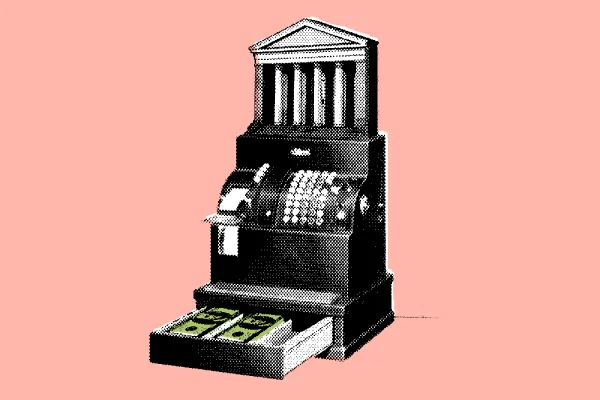There are two schools of thought as to why mortgage defaults have climbed so precipitously in the U.S. The “won’t pay” school holds that homeowners with only a small equity stake blithely turn in their keys once home prices head south. The “can’t pay” school says that the importance of negative equity is exaggerated. Rather, defaults are driven by the inability of borrowers to service their debts. This argument is supported by evidence of widespread fraud in the mortgage world. Both views share something in common. They suggest that calculated self-interest, rather than the “madness of crowds,” played a key role in the housing bubble.
What motivates the “mortgage walkers” to leave their homes? A common explanation goes something like this. During the boom years it was possible to buy a house with only a small down payment (or none at all). As the buyer benefited from any house price appreciation, he or she was acquiring, in effect, a free call option. Because mortgage loans are nonrecourse, they also received a free put option. Now that home prices are falling nationwide, it makes sense for buyers to exercise that put. Finance theory supports this explanation for “jingle-mail.” Three decades ago Nobel laureate Robert Merton described how corporate equity was really a combination of call and put options.
The latest data from the housing market, however, suggests a different story. David Watts of CreditSights says that “ruthless default” is relatively uncommon. He finds little correlation between mortgages with low initial equity (high loan-to-value) and delinquencies. Instead, defaults have been highest among those mortgages issued with minimal documentation (so-called low-doc loans) and those with initially low interest rates. Among subprime loans, delinquencies tend to take off after the payments reset at a higher rate.
But surely it was irrational of lenders to provide mortgages to borrowers who had little prospect of paying them back? Not necessarily, says William Black, an associate professor at the University of Missouri–Kansas City School of Law, who prosecuted corrupt savings and loan companies on behalf of the federal government in the 1980s. By the time that crisis came to an end, more than a thousand thrift managers had been convicted of felonies. In The Best Way to Rob a Bank Is to Own One, Black develops a theory he calls “control fraud” to explain what happened. Control frauds are “financial superpredators” who use accounting fraud to generate profits. They typically target poorly regulated businesses. In the 1980s Black and his colleagues discovered that the most notorious S&Ls showed the highest profitability. The S&Ls achieved this feat both by exploiting accounting loopholes and by plain old fraud. Such control frauds grew quickly, inflating profits and hiding losses. Classic Ponzi schemes, they depended on fresh sources of capital and rising real estate prices to survive.
One favorite ploy was to provide acquisition, development and construction loans to real estate developers. A typical ADC loan involved no down payment, booked up-front fees for the lender, was interest-only at inception, employed false appraisals to inflate collateral values and was nonrecourse to the borrower. Many ADC borrowers were really “straws” put up by corrupt lenders who made these loans to generate spurious profits. Defaults were frequently delayed by refinancing the loans.
Black argues that reckless lending by S&L control frauds contributed to regional housing bubbles in Arizona, Arkansas, Louisiana and Texas. Once regulators understood the game, they restricted the ability of control frauds to make new loans. Black maintains that this move was largely responsible for limiting taxpayer losses for the S&L crisis to less than $200 billion.
The worst mortgages of recent years have much in common with the control fraud ADC loans. Appraisal fraud was common, and mortgage providers were able to book profits on negative amortization loans before any interest was paid. Lenders often misrepresented loan terms and fees. Iowa Attorney General Thomas Miller has said that “most stated-income fraud occurs at the suggestion or direction of the loan originator, not the consumer.” Refinancing properties during the boom also served to conceal poor and fraudulent underwriting, according to Fitch Ratings, which cites one study in which 70 percent of early defaulting loans were found to contain fraudulent representations on the application. Linking the compensation of mortgage executives to the number of loans they originated also created a dangerous incentive. “If you pay loan officers on the basis of volume originated, they will make poor or fraudulent loans,” says Black.
Control frauds thrive in poorly regulated markets: Unsurprisingly, the majority of subprime loans were not originated by federally chartered or insured corporations. Yet liberal economists persist in arguing that financial markets are best left free to regulate themselves. Former Federal Reserve Board chairman Alan Greenspan has been the best-known advocate of this laissez-faire approach.
Greenspan might have learned from experience. In 1985, as a consultant, he supplied Lincoln Savings and Loan Association with a clean bill of health. He has remained unrepentant, insisting that Lincoln’s balance sheet was robust and that Charles Keating Jr., who controlled the thrift, had done nothing wrong at that point. Black says, however, that Keating, who went to prison for fraud, had already set Lincoln on the path to ruin, eventually costing U.S. taxpayers more than a billion dollars. At the Fed, as the nation’s chief bank regulator, Greenspan remained a keen advocate of financial deregulation and ignored warnings by fellow governor Edward Gramlich of subprime shenanigans.
No doubt many people bought houses during the boom knowing that, with little skin in the game, they had a limited downside and a potentially unlimited upside. Walking away from a mortgage with negative equity is perfectly rational. Control frauds are also rational — and far more dangerous because their actions destroy trust in the credit system. When they take over banks, they can foster speculative bubbles.
The late John Kenneth Galbraith would have understood the concept of control fraud. In The Great Crash: 1929, he introduced readers to the “bezzle.” Wrote Galbraith: “At any given time there exists an inventory of undiscovered embezzlement in — or more precisely not in — the country’s businesses and banks. This inventory — it should perhaps be called the bezzle — amounts at any moment to many millions of dollars. It also varies in size with the business cycle. In good times people are relaxed, trusting, and money is plentiful. But even though money is plentiful, there are always many people who need more. Under these circumstances the rate of embezzlement grows, the rate of discovery falls off, and the bezzle increases rapidly.” It is the job of financial regulators to identify the bezzle and nip it in the bud before it grows too large. In recent years, they have singularly failed at this task.
Edward Chancellor is the author of Devil Take the Hindmost and a senior member of GMO’s asset allocation team.





